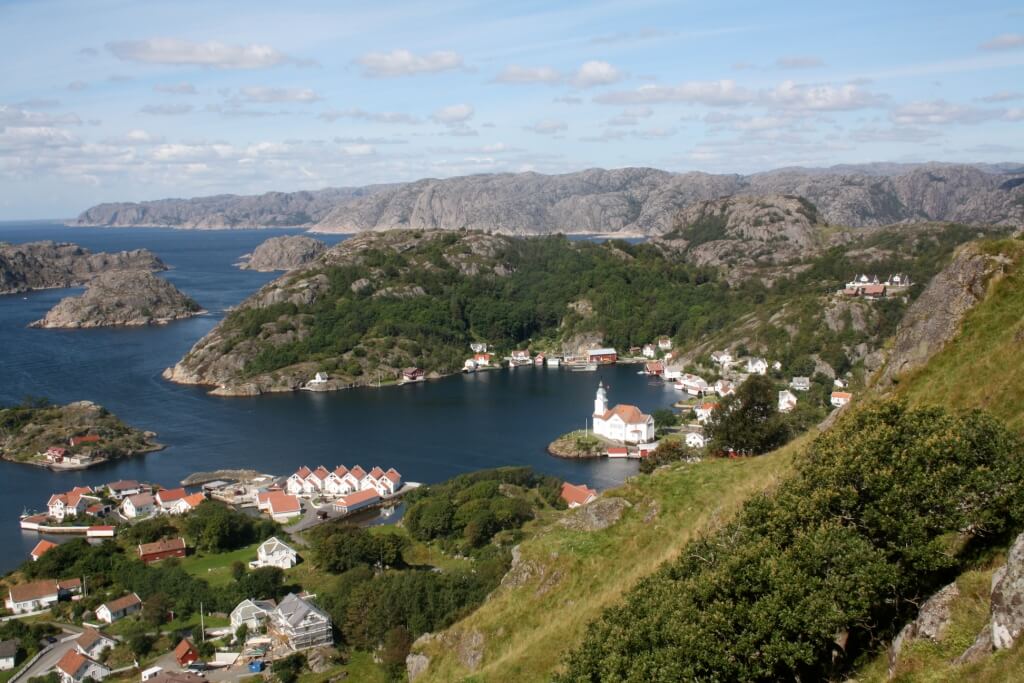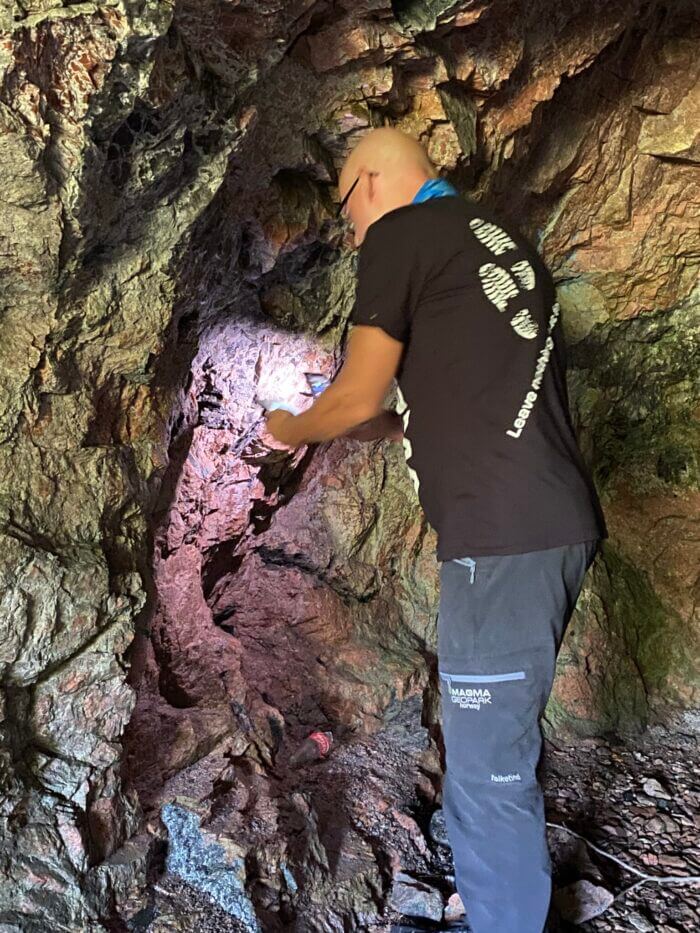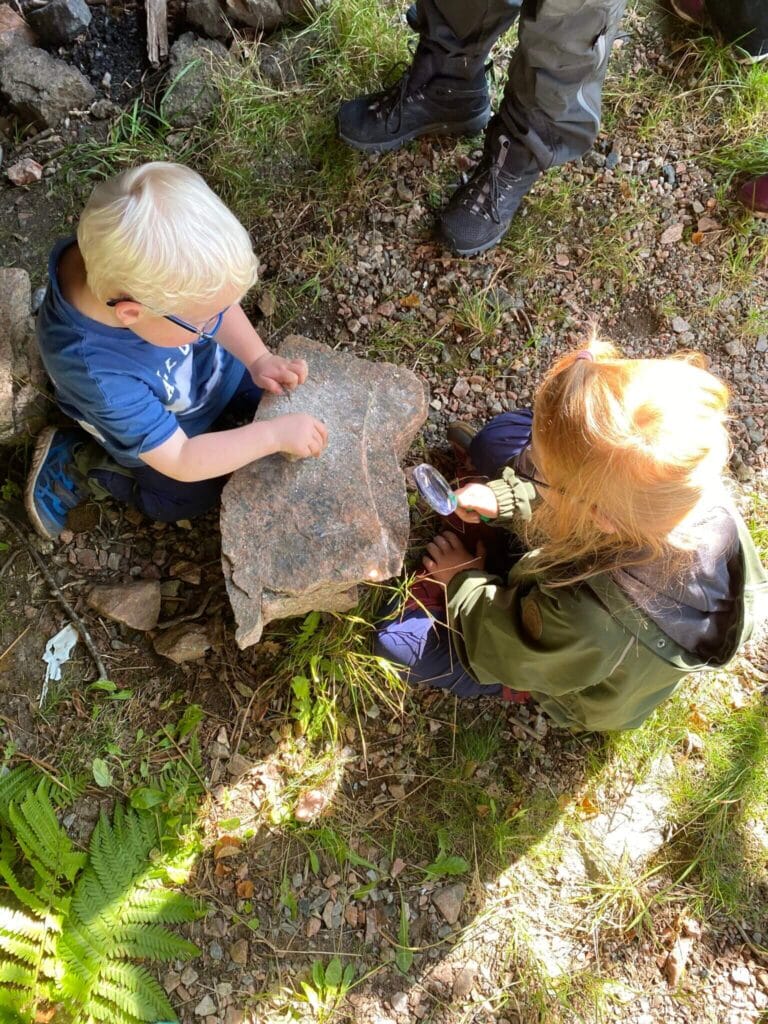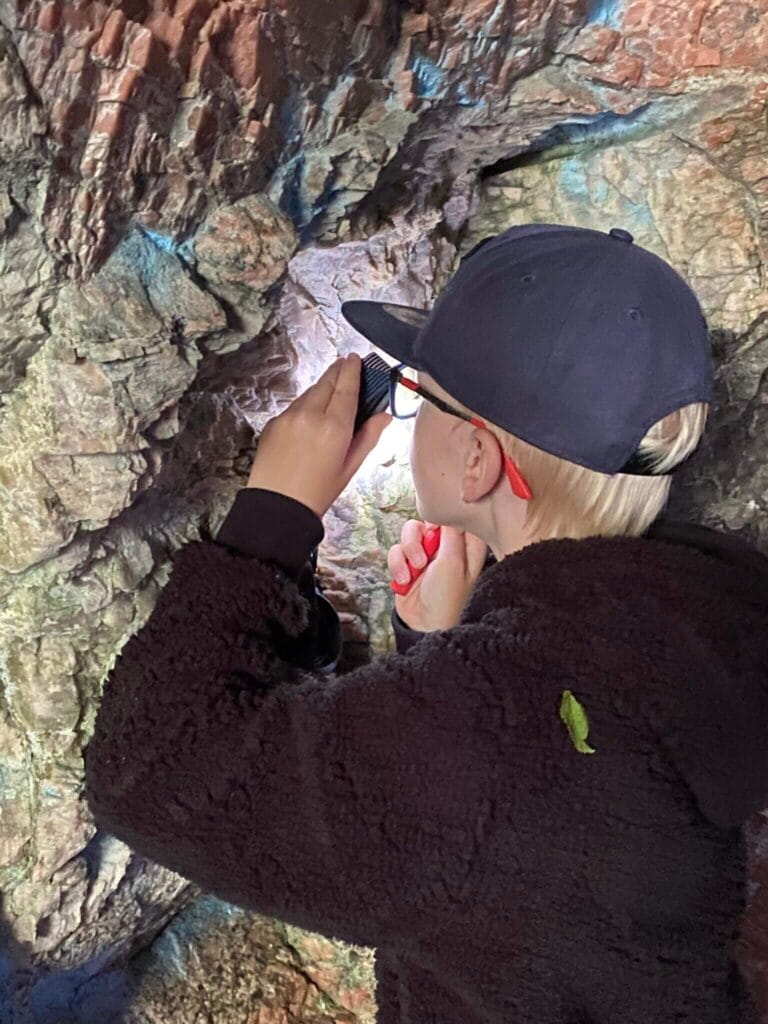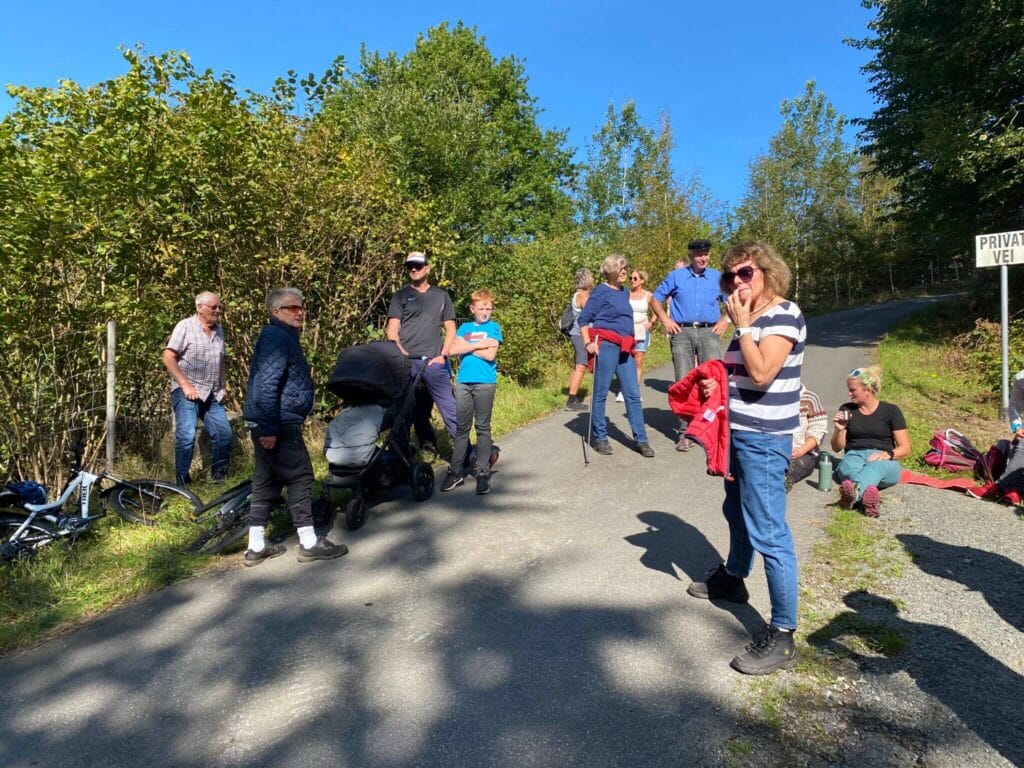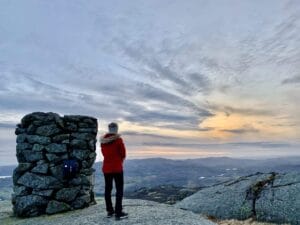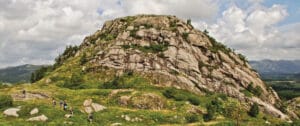
Kirkehamn
Harbour, mining area and historical site in Flekkefjord
Geology and nature
Hidra is the largest island in the Magma Geopark and offers picturesque southern villages and stunning scenery. Hidra was covered by ice during several ice ages. The last ice melted 12,000 years ago. The island is dominated by granite with some elements of the moraines in the mountains.
There are several traces of the mining industry at Hidra. It was mainly feldspar and quartz that were taken out of the mines, but we also find traces of many other minerals. The most accessible mine is located at Urstad and is the only mine that is secured. Good parking has also been established and signs have been set up where you can read about the history of the mines at Hidra. None of the other mines are secured.
Culture and history
People have lived on Hidra for thousands of years. The sea has always been the most important industry on the island. Fish is still delivered at the landing site in Kirkehamn, and farmed salmon constitutes a significant industry.
During the Second World War, German soldiers built Hitterøy fortress, and around 100 soldiers were stationed here. If you follow the path, you will still find traces of the fortress. Hågåsen offers a spectacular view of the sea. Just months before the invasion by the Germans on 9 April 1940, Norwegian marines were stationed here to protect neutrality. They had a perfect view of the coast from Lista in the south to Sokndal in the north. After the invasion, German soldiers built Hitterøy fortress. An entire city grew on Hågåsen during the war, with headquarters, underground passages and artillery posts. If you follow the path on Hågåsen, you will still find traces of the fortress.
There are two villages in Hidra; Kirkehamn and Rasvåg. Kirkehamn is named after the large white church (1854) that dominates the sheltered harbour. In idyllic Kirkehamn, you can enjoy the view of the harbor from Kongshamn Bryggerestaurant, which serves local food.
About Urstad mines
The mines are part of a pegmatite corridor. Pegmatite is a very coarse-grained rock that is usually formed by the crystallization of residual solutions of magma. This residual solution may contain some water and many different interesting minerals may be formed. Meter-sized crystals can be found in pegmatites. At Hidra, feldspar and quartz were in several places completely visible during the day in coarse-grained passages called pegmatite passages. Mining at Hidra started in the 1850s and the last mine closed approx. 1930.
In Urstad mine, in addition to feldspar and quartz, you can see several other minerals, such as biotite and muscovite (silver), magnetite (magnetic), ilmenite (white pigment), garnets (various types) and the radioactive mineral aeshynite. Now Urstad mine has finally been made available to the public. The mines have been cleaned and parking spaces have been arranged. Welcome to an exciting, and for many unknown, journey in Magma Geopark's history!
Photo gallery
Her er Kirkehamn
Category:
Flekkefjord, Geopark, Hidra, Historic places, Kultur, Magma Geopark Sites
Other experiences in Magma Geopark
See more experiences in Magma Geopark
